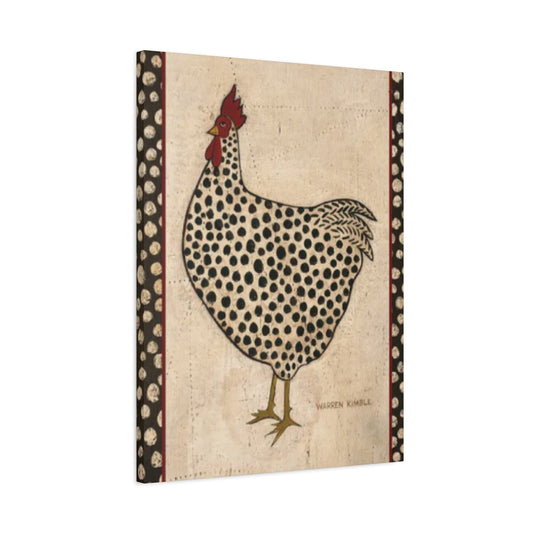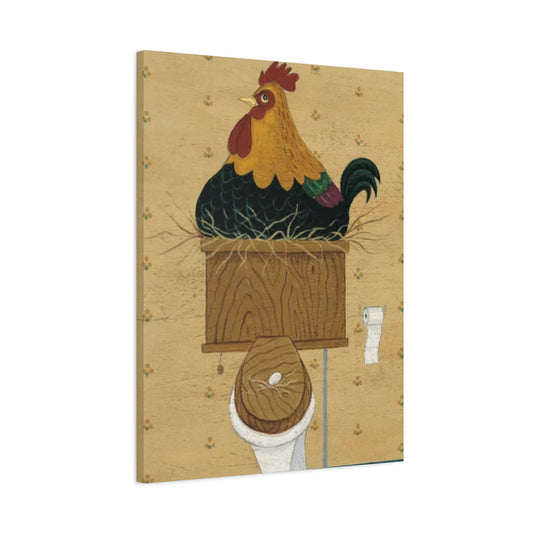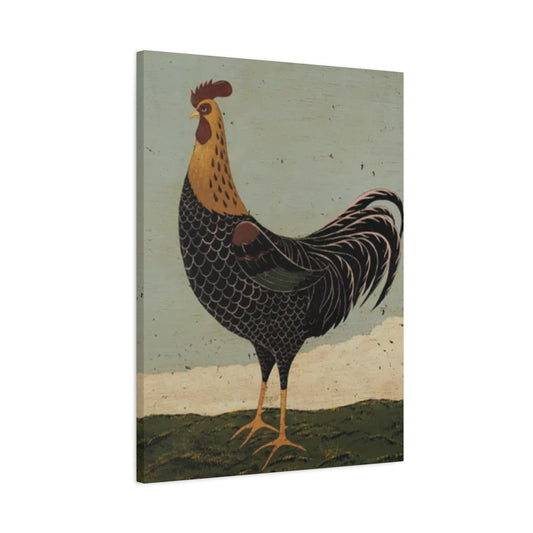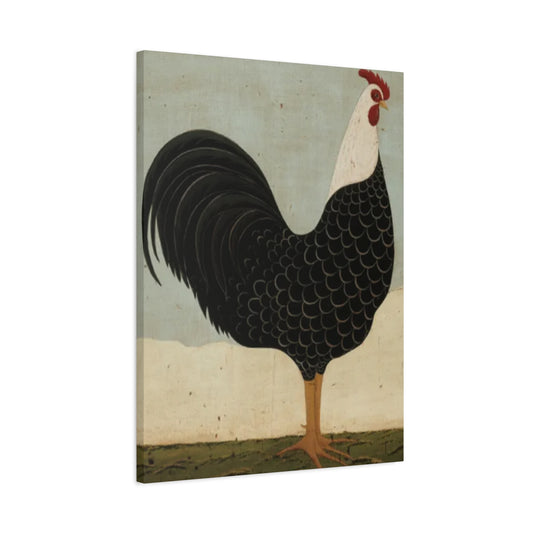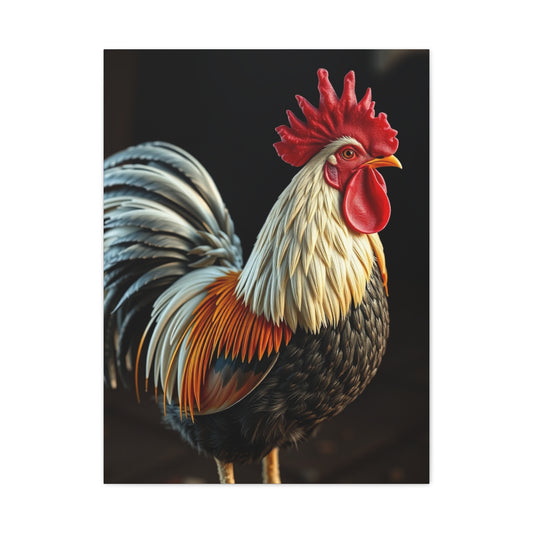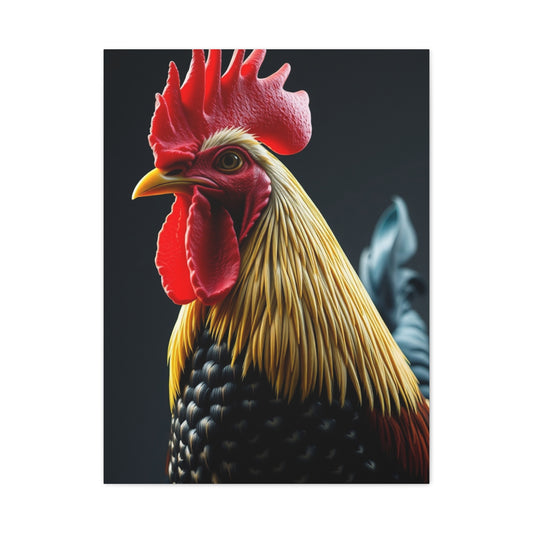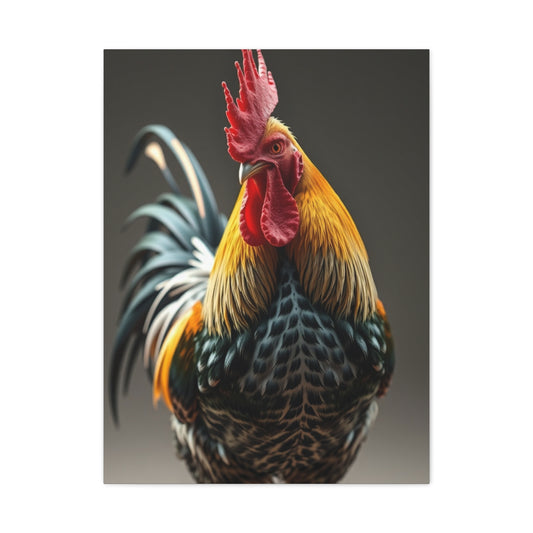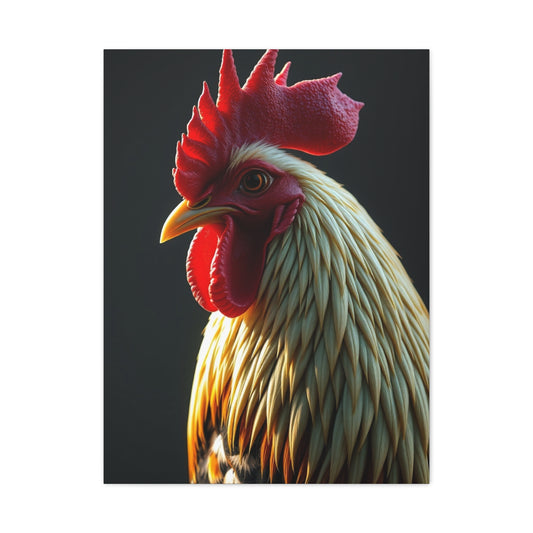Transforming Your Space with Charming Chicken Wall Art Decor Ideas
In recent years, homeowners and interior enthusiasts have rediscovered the charm of farmhouse-inspired decorating. Among the many creative elements that define this beloved style, chicken wall art décor has gained a special place. These designs capture the warmth, tradition, and pastoral beauty of rural living while adding a sense of playfulness and comfort to modern homes. What makes chicken-themed artwork particularly appealing is its ability to blend nostalgia with contemporary tastes, offering both rustic authenticity and visual interest.
Interestingly, you don’t need to rely on expensive gallery pieces or mass-produced prints to bring this style into your home. One of the most innovative and budget-friendly methods is transforming everyday household items, such as fabric placemats, into beautiful framed wall art. This approach not only saves money but also ensures that your décor reflects your personal creativity and flair. Let’s explore how this process works and why it has become a favorite DIY project among farmhouse-style lovers.
The Allure of Chicken Wall Art
When it comes to choosing wall art that adds warmth, character, and a touch of nostalgia, chicken-themed artwork has become an unexpectedly popular choice. While at first glance it might appear to simply reflect rural life, the deeper symbolism of chickens makes this motif far more meaningful. Chickens represent prosperity, simplicity, resilience, and the comfort of everyday living—all qualities people are eager to bring into their homes through thoughtful design. By placing chicken wall art in key areas of the home, such as the kitchen, dining room, or even a cozy breakfast nook, homeowners instantly set a tone of familiarity and charm that feels both timeless and welcoming.
One of the most appealing aspects of chicken art is its versatility. A framed painting, rustic print, or even a modern minimalist sketch can change the entire ambiance of a room. Pairing chicken imagery with natural design materials—like raw wood beams, stone countertops, woven baskets, or linen curtains—creates an environment that is warm, inviting, and deeply connected to tradition. This blend of art and material makes a space feel lived-in, not staged, evoking a sense of genuine comfort that modern, sleek décor often struggles to achieve.
But beyond its decorative value, chicken wall art tells a story. It carries associations of heritage, homeliness, and a slower pace of life, offering a gentle reminder of values rooted in simplicity and sustenance. Many people grew up with memories of rural homes, farms, or visits to the countryside where chickens were part of daily life. Displaying this imagery allows individuals to honor those connections, weaving personal history into their interiors in a subtle yet powerful way.
The farmhouse style trend has only amplified the appeal of chicken motifs. Pairing a vibrant rooster painting with weathered barn wood frames, distressed whitewashed finishes, or galvanized metal accents can instantly create the perfect finishing touch for a rustic-inspired interior. Even in homes that are not overtly farmhouse in style, chicken wall art can act as a playful accent piece that bridges traditional warmth with contemporary flair. For example, a bold, graphic chicken print placed in a modern dining room can serve as both a conversation starter and a whimsical nod to tradition.
Additionally, chickens are symbolic in many cultures across the world, which makes chicken wall art appealing on a broader level. In some traditions, chickens represent fertility, abundance, and good fortune. In others, they symbolize vigilance and protection. By hanging artwork that features these birds, homeowners are not just decorating their walls—they are subtly inviting positive energy and symbolic meaning into their living environment.
From a design perspective, chicken-themed art can also be highly adaptable in style and color palette. Bright, colorful rooster paintings bring energy and vibrancy, making them ideal for kitchens or spaces where families gather. On the other hand, monochrome sketches or minimalist silhouettes of hens can provide understated elegance for more neutral or modern interiors. Whether bold or subtle, chicken motifs can harmonize with almost any existing décor, proving their flexibility in design.
Why Fabric Placemats Make Perfect Artwork
At first glance, the thought of turning fabric placemats into wall art might seem unconventional. After all, placemats are typically associated with protecting dining tables from spills and scratches, not decorating walls. However, when viewed through a creative lens, fabric placemats hold tremendous potential as affordable, versatile, and visually striking pieces of home décor. By repurposing these everyday items, homeowners can create custom artwork that feels both stylish and meaningful—without the high costs often associated with professional art prints or commissioned pieces.
One of the biggest advantages of using fabric placemats as artwork is accessibility. Unlike traditional canvas paintings or framed prints, which can be expensive and require a significant investment, placemats are widely available in home décor stores, supermarkets, and craft shops. They come in a variety of styles, colors, and themes, making it easy to find patterns that align with your personal taste or match a specific design aesthetic. Farmhouse-inspired motifs are especially popular, and many placemats feature charming depictions of chickens, roosters, barns, or floral patterns that perfectly suit rustic or country-themed interiors. With just a little imagination, these designs can be repurposed into beautiful wall art pieces that elevate any room.
Another compelling reason to consider placemats as artwork is the quality of the material itself. Unlike mass-produced paper prints, which often look flat and lack texture, fabric placemats offer a depth that instantly enhances their visual appeal. The woven fibers create a tactile surface that interacts with light in interesting ways, adding richness and dimension to the finished piece. When mounted, stretched over a canvas frame, or placed inside a wooden frame, a placemat takes on a whole new character—appearing less like a simple dining accessory and more like a thoughtfully chosen piece of art. This added texture ensures the artwork feels authentic and visually engaging, especially when paired with other rustic elements such as reclaimed wood, galvanized metal accents, or stone surfaces.
Affordability is another major benefit of this creative décor idea. High-quality wall art can often come with a hefty price tag, leaving many homeowners settling for mass-produced pieces that lack personality. Fabric placemats, on the other hand, provide an inexpensive way to achieve a custom look. For just a fraction of the cost of a painting, you can create a gallery wall or a focal point piece that feels unique to your home. This approach allows for experimentation without the fear of overspending. You can swap out patterns with the changing seasons, holidays, or even your evolving tastes, keeping your home décor fresh and exciting year-round.
Beyond affordability and aesthetics, repurposing placemats into artwork is also a wonderfully sustainable choice. In a time when eco-friendly living is becoming increasingly important, giving a new purpose to everyday items reduces waste and supports a more mindful approach to decorating. Instead of discarding old placemats or buying mass-produced décor items, homeowners can upcycle existing pieces into something truly special. This not only benefits the environment but also brings a sense of creativity and craftsmanship into the home.
Understanding the Appeal of Poultry-Themed Home Decoration
For generations, homeowners have been drawn to the rustic charm and symbolic richness of poultry-inspired décor. Chickens, roosters, and other barnyard birds are far more than decorative motifs; they represent qualities deeply tied to the concept of home—warmth, nourishment, simplicity, and a connection to the natural world. This explains why poultry-themed artwork continues to enjoy popularity in kitchens, dining areas, and family living spaces, where people gather to share meals and create memories. These designs don’t just decorate a room—they bring with them an atmosphere of nostalgia, comfort, and rural tranquility.
At the heart of this fascination lies symbolism. Chickens and roosters have long been regarded as guardians of the household, symbols of prosperity, and emblems of morning energy. In many cultures, roosters are considered protectors who ward off negativity, while hens embody nurturing qualities tied to family and community. When these motifs are displayed as part of home décor, they subtly infuse spaces with positive associations, reinforcing the idea of the home as a sanctuary filled with warmth and security.
Another reason poultry-themed decorations resonate so strongly is their versatility. Unlike some design elements that feel tied to one specific style, chicken and rooster imagery can be adapted across a wide spectrum of aesthetics. In a traditional farmhouse interior, a framed rooster painting or distressed wooden sign featuring poultry art fits seamlessly with reclaimed wood tables, vintage linens, and rustic finishes. Meanwhile, in a more modern or country chic space, a minimalist black-and-white sketch of a chicken can serve as a stylish focal point, balancing tradition with contemporary elegance. This adaptability makes poultry motifs appealing to homeowners with diverse tastes.
Practical placement also enhances their appeal. Kitchens, for instance, are natural gathering spaces where poultry-themed art feels right at home. A series of framed chicken illustrations near a breakfast nook can create a cozy, cheerful vibe that encourages relaxation and conversation. Dining areas benefit as well, where rooster wall art can double as a bold centerpiece, sparking conversation among guests. Even living rooms—spaces often reserved for more formal or neutral art—can be softened by poultry décor, which lends a touch of warmth and personality without overwhelming the overall scheme.
Materials play an important role in ensuring that poultry wall art feels authentic and long-lasting. While paper prints can certainly deliver beautiful imagery, they often lack the depth and tactile quality that fabrics or textured mediums provide. This is why fabric placemats have emerged as an inventive and practical material choice for poultry-inspired art projects. Many placemats feature detailed illustrations of chickens and roosters in vibrant colors, often paired with floral patterns, farm-inspired borders, or rustic typography. When framed or stretched over a canvas, these placemats transform into unique artwork that looks intentionally designed for the wall.
The fabric medium also offers benefits beyond visual appeal. Textiles introduce texture and dimension that paper prints simply cannot replicate. The woven fibers catch and reflect light differently, giving each piece of artwork a richness and depth that enhances its presence on the wall. This tactile quality creates a sense of authenticity, making the piece feel handcrafted and original rather than mass-produced.
Discovering Suitable Materials for Your Creative Project
When embarking on chicken wall art creation, the selection of base materials significantly impacts the final outcome. Fabric placemats present numerous advantages over traditional art prints, including their inherent durability, rich color saturation, and unique textile qualities that add dimensional interest to finished pieces. These dining accessories often feature intricate designs created specifically for decorative purposes, making them ideal candidates for artistic transformation.
The hunt for appropriate placemats can become an exciting treasure hunting expedition. Thrift stores, antique shops, and estate sales frequently yield unexpected discoveries of vintage or unique designs that may no longer be available through conventional retail channels. This scarcity adds exclusivity to your finished artwork, ensuring that your chicken wall decor remains distinctive and personal.
Quality considerations when selecting placemats include fabric composition, color fastness, and design clarity. Cotton and linen blends typically provide the best results for framing projects, as these natural fibers maintain their appearance over time without significant fading or deterioration. Synthetic materials may present challenges during the framing process, particularly when exposed to adhesives or mounting techniques.
The timing of material acquisition often proves crucial for project success. Seasonal availability of poultry-themed placemats tends to fluctuate, with greater selection typically appearing during spring and early summer months when farmhouse decorating trends reach peak popularity. Planning ahead and purchasing materials when discovered, rather than waiting until project initiation, ensures availability of desired designs.
Frame Selection Strategies for Optimal Visual Impact
Choosing appropriate frames for chicken wall art requires balancing aesthetic preferences with practical considerations. The frame serves not only as a protective boundary for the artwork but also as an integral component of the overall design statement. Vintage frames offer particular appeal for poultry-themed projects, as their aged character complements the rustic nature of farm-inspired decor.
Oval frames present unique opportunities for creating focal points that draw attention to the central subject matter. The curved lines of oval frames soften the overall appearance of wall arrangements while providing elegant contrast to rectangular room elements. When working with oval frames, careful positioning of the placemat design ensures that key visual elements remain prominently displayed within the frame opening.
Rectangular and square frames offer versatility in arrangement possibilities, allowing for grouping multiple pieces in gallery wall configurations. These traditional frame shapes accommodate various placemat sizes and can be easily coordinated with existing wall decor elements. The uniformity of rectangular frames simplifies the process of creating balanced visual compositions.
Frame condition significantly influences the final aesthetic outcome of your project. Slightly damaged or weathered frames often enhance the rustic appeal of chicken-themed artwork, provided the structural integrity remains sound. Surface imperfections, minor scratches, and paint wear contribute to the authentic vintage character that many homeowners seek in farmhouse-style decorating.
Preparation Techniques for Frame Restoration
Proper frame preparation forms the foundation of successful chicken wall art projects. Initial cleaning removes accumulated dirt, grime, and old finishes that may interfere with subsequent treatment applications. This preparatory phase requires patience and attention to detail, as thorough cleaning ensures optimal results for all subsequent steps in the restoration process.
Surface assessment following initial cleaning reveals the true condition of the frame material and helps determine appropriate treatment methods. Wood frames may require sanding to smooth rough areas or remove previous finish layers, while metal frames might need rust removal or primer application. Understanding the base material characteristics guides decision-making throughout the restoration process.
Paint selection for frame refinishing should complement both the placemat colors and the intended display environment. Neutral tones such as cream, white, or soft gray provide versatile backgrounds that allow the chicken artwork to remain the primary focal point. Bold colors can create dramatic contrast but require careful consideration to avoid overwhelming the delicate details of the placemat design.
Application techniques vary depending on the chosen paint type and desired final appearance. Spray paint offers smooth, even coverage that minimizes brush marks and texture variations. Traditional brush application provides greater control over coverage density and allows for intentional texture creation. Both methods can produce excellent results when applied with proper preparation and technique.
Distressing Methods for Authentic Vintage Character
Creating authentic-looking aged finishes on painted frames requires understanding of natural wear patterns and selective removal techniques. Hand-sanding with fine-grit sandpaper allows precise control over distressing intensity and location. Focus distressing efforts on areas that would naturally experience wear, such as raised details, corners, and high-contact zones.
The timing of distressing activities affects both the ease of execution and the final appearance quality. Working with partially dried paint creates different texture effects compared to sanding fully cured surfaces. Experimenting with various timing approaches helps develop personal preferences and technique mastery.
Tool selection for distressing work influences both the efficiency of the process and the character of the finished appearance. Fine-grit flexible sandpaper conforms to curved frame details while providing smooth finish transitions. Steel wool creates softer, more gradual wear patterns that mimic natural aging processes. Combination approaches often yield the most realistic results.
Protection measures during distressing prevent unwanted damage to frame surfaces and surrounding work areas. Dust collection systems or adequate ventilation ensure comfortable working conditions while preventing fine particles from settling on wet paint surfaces. Protective coverings for work surfaces simplify cleanup and prevent inadvertent damage to underlying furniture or flooring.
Mounting Techniques for Fabric Placemat Artwork
Successful mounting of fabric placemats requires techniques that accommodate the flexible nature of textile materials while ensuring long-term stability and appearance retention. Unlike rigid paper or canvas materials, fabric placemats present unique challenges related to tension distribution, wrinkle prevention, and edge security.
Backing material selection significantly impacts both the mounting process and the longevity of the finished piece. Heavy cardboard provides adequate support for lightweight placemats while remaining cost-effective and easy to work with. Foam core board offers superior rigidity and professional appearance but requires more precise cutting techniques. Hardboard backing ensures maximum durability but adds weight to the finished piece.
Cutting backing materials to proper dimensions requires careful measurement and precise execution. The backing should fit snugly within the frame rabbet while allowing sufficient material extension for secure placemat attachment. Oversized backing creates fitting problems, while undersized backing may result in inadequate support or visible gaps around frame edges.
Placemat positioning on the backing material determines the visual composition of the finished artwork. Central placement typically provides the most balanced appearance, but off-center positioning can create dynamic visual interest when appropriate to the design. Taking time to experiment with various placement options before final attachment ensures optimal aesthetic outcomes.
Securing Methods for Long-Term Stability
Proper attachment of placemats to backing materials ensures long-term stability while preventing damage to the fabric during installation or subsequent handling. Adhesive selection requires balancing immediate holding power with reversibility considerations, as future modifications or repairs may become necessary.
Tape applications offer reliable attachment methods that accommodate the flexible nature of fabric materials. High-quality duct tape provides strong adhesion while conforming to fabric contours and backing material surfaces. Application technique affects both holding power and appearance, with smooth, wrinkle-free installation being essential for professional results.
Edge treatment prevents fraying and maintains clean appearance lines around the visible artwork perimeter. Folding fabric edges around backing materials creates finished borders while providing additional attachment points for securing methods. Proper tension distribution during edge folding prevents distortion of the central design elements.
Alternative attachment methods include stapling for heavy-duty applications or spray adhesives for lightweight materials. Each method presents distinct advantages and limitations that should be evaluated based on specific project requirements and personal skill levels. Combination approaches often provide optimal security while accommodating various material characteristics.
Color Coordination Strategies for Cohesive Design
Successful chicken wall art projects require thoughtful color coordination between frame finishes, placemat designs, and surrounding decor elements. Understanding basic color theory principles helps create harmonious combinations that enhance rather than compete with existing room aesthetics.
Neutral frame colors provide versatile foundations that complement most placemat designs while allowing flexibility in room color scheme evolution. White, cream, and soft gray finishes create clean backgrounds that emphasize artwork details without introducing competing visual elements. These timeless choices ensure long-term compatibility with changing decorating preferences.
Contrasting color combinations create dramatic visual impact when applied thoughtfully. Bold frame colors can emphasize specific design elements within the placemat artwork while creating striking focal points on wall surfaces. However, high-contrast combinations require careful balance to prevent overwhelming delicate fabric details or creating jarring visual discord.
Monochromatic approaches utilize various shades and tints of single color families to create sophisticated, unified appearances. This strategy works particularly well with vintage-style chicken artwork, as it mimics the natural aging process that gradually harmonizes originally disparate color elements over time.
Gallery Wall Planning for Multiple Piece Displays
Creating effective gallery wall arrangements with multiple chicken wall art pieces requires careful planning and consideration of visual balance, spacing relationships, and thematic coherence. Successful groupings enhance the impact of individual pieces while creating cohesive decorative statements that anchor entire room designs.
Piece selection for gallery walls should balance visual variety with thematic consistency. Combining different frame shapes, sizes, and finishes adds interest while maintaining the unifying chicken theme throughout the arrangement. This approach prevents monotonous appearances while ensuring clear design intentions remain apparent to viewers.
Spacing calculations determine the visual flow and overall impact of gallery wall installations. Generally, maintaining consistent gaps of two to three inches between frames creates cohesive appearances without overcrowding. However, variations in spacing can create intentional emphasis on particular pieces or accommodate architectural features within the display area.
Layout planning benefits from floor-based arrangement testing before wall installation. Creating full-scale paper templates or using actual frames allows experimentation with various configurations until optimal arrangements are identified. This preparatory work prevents unnecessary wall damage from repeated hanging attempts and ensures satisfactory final outcomes.
Lighting Considerations for Artwork Display
Proper lighting significantly enhances the visual impact and longevity of chicken wall art displays. Understanding basic illumination principles helps create optimal viewing conditions while protecting fabric materials from harmful light exposure that can cause fading or deterioration over time.
Natural light sources provide excellent color rendering but require management to prevent damage from ultraviolet radiation and excessive heat exposure. Positioning artwork away from direct sunlight while maintaining adequate ambient illumination creates ideal viewing conditions. Window treatments can help control light intensity during peak exposure periods.
Artificial lighting options include track lighting, picture lights, and strategically placed lamps that highlight artwork without creating glare or hot spots. LED lighting systems offer energy efficiency and reduced heat output compared to traditional incandescent options, making them particularly suitable for textile artwork preservation.
Light direction affects both the visibility of artwork details and the creation of unwanted shadows or reflections. Front lighting provides even illumination but may create glare on frame glass surfaces. Angled lighting reduces reflections while creating subtle dimensional effects that enhance the texture qualities of fabric materials.
Seasonal Rotation Strategies for Dynamic Displays
Implementing seasonal rotation systems for chicken wall art allows for dynamic room refreshment while protecting individual pieces from continuous light exposure and environmental stresses. This approach maximizes the decorative impact of limited artwork collections while extending the useful life of fabric-based pieces.
Storage considerations for non-displayed artwork include protection from dust, moisture, and physical damage. Acid-free tissue paper or cotton fabric covers prevent surface contamination while allowing air circulation. Flat storage in oversized drawers or between mattresses maintains proper positioning without creating creases or pressure points.
Rotation timing can align with seasonal decorating themes or personal preferences for room refreshment. Quarterly changes provide adequate display time for viewer appreciation while preventing visual fatigue from static arrangements. More frequent rotations may be appropriate for high-traffic areas where visual interest requires regular renewal.
Documentation systems help track rotation schedules and monitor artwork condition over time. Simple records noting display periods, storage locations, and observed condition changes support long-term preservation efforts while ensuring all pieces receive appropriate display opportunities.
Maintenance Procedures for Preserved Appearance
Regular maintenance procedures ensure that chicken wall art maintains its attractive appearance throughout extended display periods. Establishing routine care schedules prevents minor issues from developing into significant problems that could compromise artwork integrity or visual appeal.
Dust removal requires gentle techniques that accommodate the delicate nature of fabric surfaces and frame finishes. Soft-bristled brushes or microfiber cloths effectively remove surface accumulations without creating scratches or texture disturbance. Vacuum cleaners with brush attachments can handle more substantial dust buildup on textured frame surfaces.
Moisture control prevents mold growth and fabric deterioration in humid environments. Maintaining consistent humidity levels through climate control systems or dehumidifiers protects both fabric and wood frame components. Monitoring devices help identify problematic conditions before damage occurs.
Inspection schedules allow early detection of developing problems such as loose mounting, frame joint separation, or fabric degradation. Monthly visual assessments combined with annual detailed examinations support proactive maintenance approaches that address issues before they require extensive repair efforts.
Creative Variations for Personalized Expressions
Expanding beyond traditional framing approaches opens numerous possibilities for personalized chicken wall art expressions that reflect individual creativity and style preferences. These variations maintain the core appeal of poultry-themed decor while incorporating unique elements that distinguish personal collections from standard approaches.
Mixed media combinations incorporate additional decorative elements such as dried flowers, vintage buttons, or small architectural salvage pieces that complement the chicken theme while adding dimensional interest. These embellishments should enhance rather than overshadow the primary placemat artwork.
Fabric manipulation techniques including gathering, pleating, or layering create texture variations that transform flat placemat surfaces into dimensional art pieces. These approaches require careful planning to maintain design visibility while achieving desired texture effects.
Shadow box presentations allow three-dimensional displays that accommodate small collectible items related to the chicken theme. Vintage egg cups, small ceramic roosters, or antique kitchen utensils can complement framed placemat artwork while creating engaging vignette displays.
Budget-Conscious Shopping Strategies
Successful chicken wall art projects often depend on discovering quality materials at affordable prices. Developing effective shopping strategies maximizes decorating budgets while ensuring access to unique pieces that distinguish personal collections from mass-produced alternatives.
Thrift store exploration requires patience and regular visits, as inventory turnover creates opportunities for unexpected discoveries. Building relationships with shop personnel can provide advance notice of particularly interesting donations or seasonal merchandise arrivals.
Estate sale attendance often yields collections of related items at reasonable prices. Early arrival ensures access to the best selection, while end-of-sale negotiations may provide additional savings on remaining inventory. Understanding typical estate sale patterns helps optimize shopping efficiency.
Online marketplace monitoring expands search capabilities beyond local geographic limitations. Setting up saved searches with relevant keywords generates notifications when matching items become available. However, shipping costs and inability to physically examine items before purchase require careful consideration.
Superior Results
Implementing professional finishing techniques elevates DIY chicken wall art projects to quality levels that rival commercial artwork while maintaining the personal satisfaction of handcrafted creation. These methods require additional time and attention to detail but produce superior results that justify the extra effort.
Edge sealing prevents fabric fraying while creating clean, finished appearances around visible artwork perimeters. Fabric sealer applications or narrow hem creation techniques accomplish this goal while maintaining material flexibility and natural texture characteristics.
Glass selection affects both artwork protection and visual presentation quality. Standard window glass provides basic protection at minimal cost, while conservation glazing offers superior UV filtration and reflection control. Acrylic alternatives reduce weight and eliminate breakage concerns while providing excellent clarity.
Professional mounting techniques include hinge mounting systems that allow artwork expansion and contraction while preventing buckling or distortion. These methods require additional materials and skill development but ensure long-term stability and appearance retention.
Troubleshooting Common Installation Challenges
Even well-planned chicken wall art projects can encounter unexpected challenges during installation or display phases. Understanding common problems and their solutions helps maintain project momentum while achieving satisfactory results despite initial setbacks.Frame fitting issues often arise when backing materials or mounted placemats exceed expected dimensions. Careful measurement verification before cutting and gradual material removal during fitting processes prevent irreversible mistakes while achieving proper fit tolerances.
Hanging hardware problems include inadequate weight support or improper wall anchor selection. Understanding frame weights and wall construction characteristics guides appropriate hardware selection while ensuring secure installation and long-term stability.Moisture damage from humid environments or accidental exposure requires prompt attention to prevent permanent staining or mold growth. Immediate drying combined with gentle cleaning techniques often restores artwork to acceptable condition without requiring complete reconstruction.
Advanced Display Configuration Options
Sophisticated display configurations elevate chicken wall art beyond simple single-piece installations while creating dynamic visual arrangements that serve as room focal points. These approaches require additional planning and coordination but produce dramatic results that justify the extra complexity.Asymmetrical arrangements create visual interest through intentional imbalance while maintaining overall compositional harmony. This approach requires careful attention to visual weight distribution and color balance to prevent chaotic appearances while achieving dynamic energy.
Layered presentations incorporate multiple depth levels through combination of framed artwork, floating shelves, and three-dimensional objects. These configurations create gallery-like displays that showcase collections while providing opportunities for seasonal accent changes.Architectural integration incorporates chicken wall art into built-in features such as alcoves, stairwell walls, or kitchen backsplash areas. These permanent installations require careful planning and coordination with other room elements but create seamless decorative integration.
Implementing proper preservation techniques ensures that chicken wall art maintains its attractive appearance and structural integrity throughout extended display periods. Understanding environmental factors that affect fabric and frame materials guides protective measures that extend artwork lifespan while preserving investment value.Temperature stability prevents expansion and contraction cycles that can cause frame joint failure or fabric distortion. Maintaining consistent indoor temperatures through climate control systems or strategic placement away from heating and cooling sources protects artwork from thermal stress.
Humidity control prevents moisture-related problems including mold growth, fabric staining, and adhesive failure. Monitoring humidity levels and implementing correction measures when necessary maintains optimal preservation conditions throughout seasonal variations.Air quality management reduces exposure to pollutants that can cause gradual deterioration or discoloration of fabric materials. Adequate ventilation combined with air filtration systems maintains clean environments that support long-term preservation goals.
Conclusion
Creating stunning chicken wall art decor through the transformation of fabric placemats represents an accessible and rewarding approach to personalizing living spaces while honoring traditional farmhouse aesthetic values. This comprehensive exploration has revealed the multifaceted nature of these projects, from initial material selection through final display configuration, demonstrating that successful outcomes depend on thoughtful planning, careful execution, and attention to detail throughout every phase of the creative process.
The versatility of chicken-themed wall decor extends far beyond simple nostalgic appeal, offering genuine opportunities for artistic expression while addressing practical decorating needs within limited budgets. The techniques presented throughout this guide accommodate various skill levels and resource availability, ensuring that enthusiasts at any experience level can achieve satisfactory results that reflect personal style preferences while maintaining the charming character that makes poultry-themed artwork so enduringly popular.
The economic advantages of creating custom chicken wall art through placemat transformation cannot be understated in today's challenging financial environment. By utilizing readily available materials and basic crafting supplies, homeowners can achieve sophisticated decorative results at a fraction of the cost associated with purchasing equivalent commercial artwork. This financial accessibility democratizes home decorating possibilities while encouraging creative exploration and skill development that extends beyond single projects to encompass broader artistic pursuits.
Furthermore, the sustainable aspects of repurposing existing placemats align with contemporary environmental consciousness while demonstrating practical applications of creative reuse principles. Rather than discarding dining accessories that may have outlived their original purpose, transformation into wall art extends material lifespan while reducing waste streams and supporting environmentally responsible consumption patterns.
The social connections fostered through thrift store exploration, estate sale attendance, and antique shop discovery add valuable community engagement dimensions to chicken wall art creation. These activities provide opportunities for interaction with like-minded individuals while supporting local businesses and charitable organizations that benefit from secondhand merchandise sales. The relationships developed through these shared interests often extend beyond individual projects to encompass broader decorating and collecting communities.
The therapeutic benefits associated with hands-on creative activities contribute significantly to the appeal of DIY chicken wall art projects. The focused attention required during frame preparation, careful measurement, and precise installation provides welcome respite from digital distractions while fostering mindfulness and present-moment awareness. These meditative qualities make project participation particularly valuable for stress reduction and mental health maintenance.
The educational opportunities inherent in chicken wall art creation encompass diverse skill areas including color theory, composition principles, material science, and basic construction techniques. These learning experiences contribute to personal development while building competency in areas that support future creative endeavors. The transferable nature of many acquired skills ensures that knowledge gained through chicken wall art projects benefits numerous other DIY activities.
The flexibility of chicken wall art displays accommodates changing decorating preferences and evolving room functions throughout different life phases. Unlike permanent built-in features, framed placemat artwork can be easily relocated, regrouped, or stored as needs change, providing long-term adaptability that justifies initial investment in quality materials and careful construction techniques.
The distinctive character achieved through handcrafted chicken wall art ensures that personal collections remain unique despite utilizing similar source materials. Individual choices regarding frame selection, color coordination, arrangement configuration, and finishing details create personalized expressions that reflect owner personality while contributing to overall home ambiance in ways that mass-produced alternatives cannot match.
In conclusion, the journey of creating chicken wall art through placemat transformation offers rich rewards that extend far beyond simple wall decoration. The combination of creative fulfillment, economic practicality, environmental responsibility, and community connection creates a holistic experience that enriches daily life while contributing to the development of distinctive personal living environments that truly reflect individual values and aesthetic preferences.


